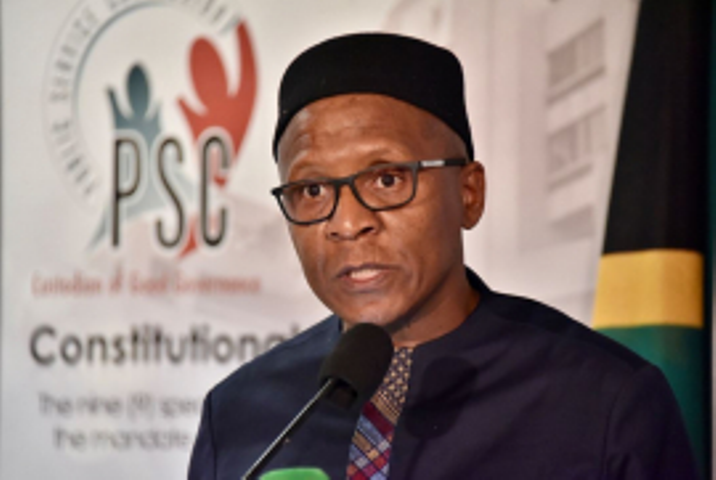PSC Flags R16.24 Billion Leave Liability, Rising Grievances in Public Service
As of December 2023, the total capped leave liability in the public sector reached R16.24 billion, a figure covering 189,039 employees.

- Country:
- South Africa
The Public Service Commission (PSC) has expressed growing concern over the mounting cost of capped leave liability, potential workforce shortages in critical sectors, and delays in grievance resolution in the South African public service. This was revealed by PSC Commissioner Anele Gxoyiya during a detailed media briefing in Pretoria on the latest edition of the commission’s Quarterly Bulletin, titled “The Pulse of the Public Service.”
Capped Leave Liability Hits R16.24 Billion
As of December 2023, the total capped leave liability in the public sector reached R16.24 billion, a figure covering 189,039 employees. This represents 14% of the total public service workforce and poses a significant long-term fiscal challenge for the government.
Commissioner Gxoyiya noted that this liability continues to rise, driven by cost-of-living adjustments and promotions to higher salary levels, which increase the monetary value of accrued leave.
“The persistent growth in this cost item highlights the urgent need for a sustainable strategy to manage leave entitlements and mitigate future financial burdens,” Gxoyiya said.
Health and Education Sectors at Risk of Skills Drain
The majority of capped leave holders are employed in the education and health sectors, with many approaching retirement age. This demographic trend has raised alarm bells over potential future skills shortages in these critical public service domains, particularly if strategic workforce planning measures are not implemented.
Gxoyiya urged departments to proactively invest in talent development, mentorship, and succession planning to avert a looming service delivery crisis.
Study Leave Patterns and Policy Standardization
Between 2020 and 2023, an estimated 17,733 to 20,651 national department employees and 21,004 to 23,265 provincial employees took study leave, a form of special leave negotiated under public sector employment frameworks.
Key insights include:
-
Most study leave takers were from Health and Education departments.
-
Study leave durations ranged between 5 and 8.5 days, with national departments averaging the highest at 8.5 days.
-
KwaZulu-Natal and Eastern Cape followed with 7.4 and 6.5 days respectively.
Until recently, departments operated under varied special leave policies, resulting in inconsistencies across the public sector. The General Public Service Sector Bargaining Council Resolution 2 of 2024 now seeks to standardize special leave provisions, ensuring fairness and administrative clarity.
Post-COVID Spike in Sick Leave
Another significant trend highlighted by the PSC was the increase in sick leave utilization in 2022, attributed to the lifting of COVID-19 restrictions and the return to full-time in-office operations. While such increases are expected during transitional periods, the PSC cautioned departments to monitor absenteeism rates and offer adequate employee wellness support.
Grievance Trends: Delays and Non-Compliance Persist
The PSC also reported on the status of grievances in the public service. As of 31 March 2025, a total of 439 grievances were registered, which included 85 cases carried over from the previous financial year.
Breakdown of progress:
-
338 grievances (77%) concluded
-
101 grievances (23%) still pending
Of the concluded cases:
-
18 (5%) substantiated
-
84 (25%) unsubstantiated
-
9 (3%) partially substantiated
-
43 (13%) internally resolved following PSC intervention
-
184 (54%) closed due to other procedural or jurisdictional reasons
The vast majority of grievances (403) involved employees on salary levels 2 to 12, while 36 came from the Senior Management Service (SMS).
Timeframe compliance:
-
91% of the Level 2–12 grievances were resolved within 150 working days
-
83% of SMS grievances concluded within the same time frame
Despite these metrics, the PSC criticized some departments for failing to comply with prescribed resolution timeframes under Resolution 14 of 2002 (for levels 2–12) and Chapter 10 of the SMS Handbook.
Investigating Causes of Grievance Resolution Delays
To enhance the integrity of the grievance system, Gxoyiya announced that the PSC would investigate causes of delayed grievance resolution in departments. The goal is to determine whether bottlenecks arise from:
-
Unrealistic timeframes
-
Inadequate human resource capacity
-
Other systemic or procedural barriers
“Timely grievance resolution is not only a matter of compliance but also essential to maintaining a productive and motivated public workforce,” Gxoyiya stressed.
Policy Recommendations and Call to Action
In light of the findings, the PSC called for:
-
Standardized leave management policies
-
Enhanced succession planning in health and education
-
Improved HR capacity in grievance management
-
A national strategy to manage the growing capped leave liability
The commission reaffirmed its role in strengthening accountability, transparency, and efficiency in the public service, and urged all government departments to align with labour resolution frameworks and service delivery standards.










